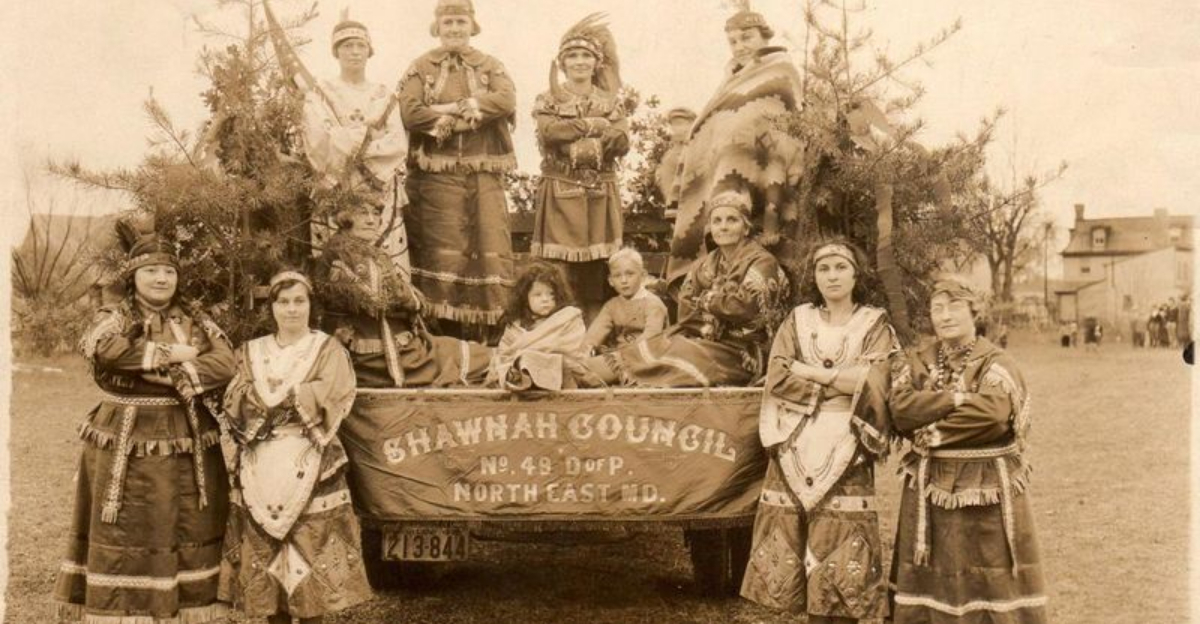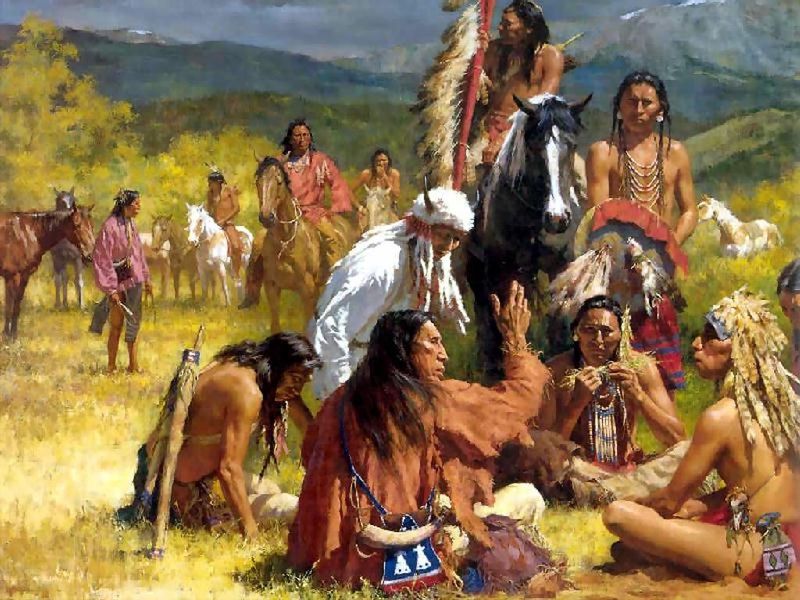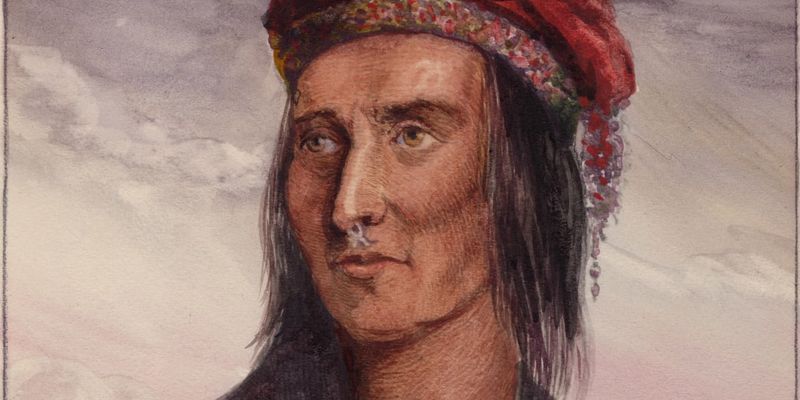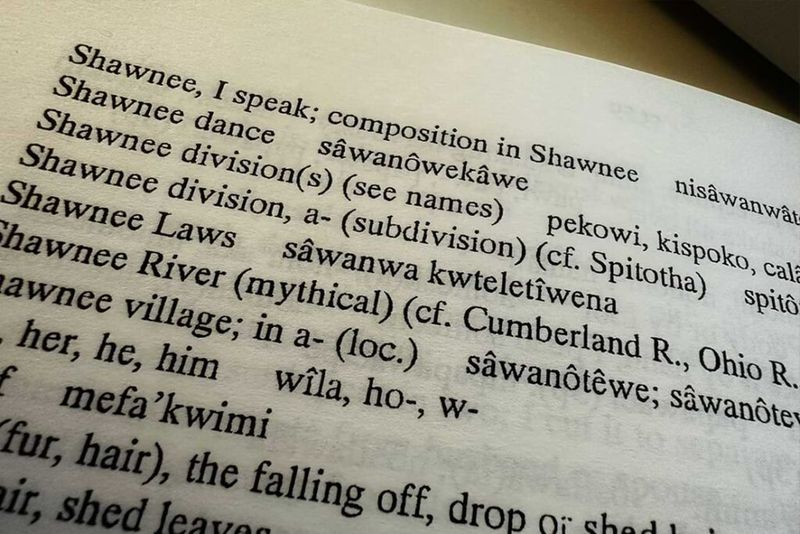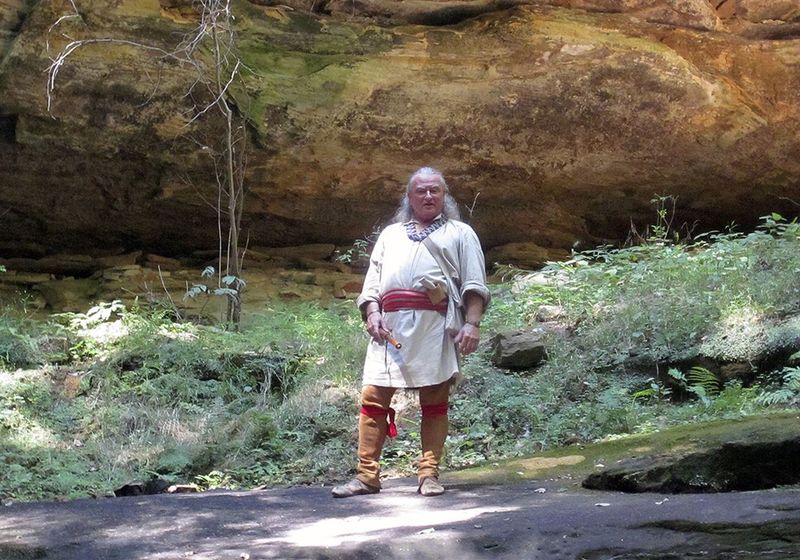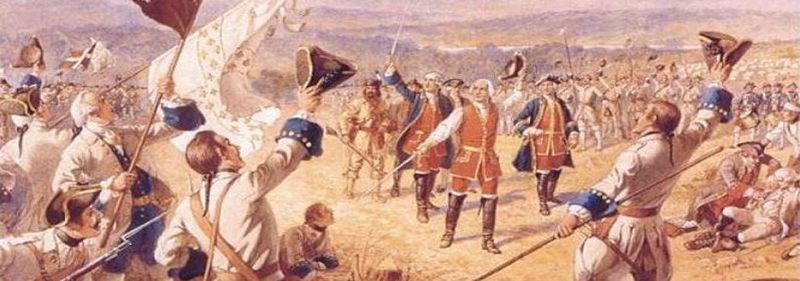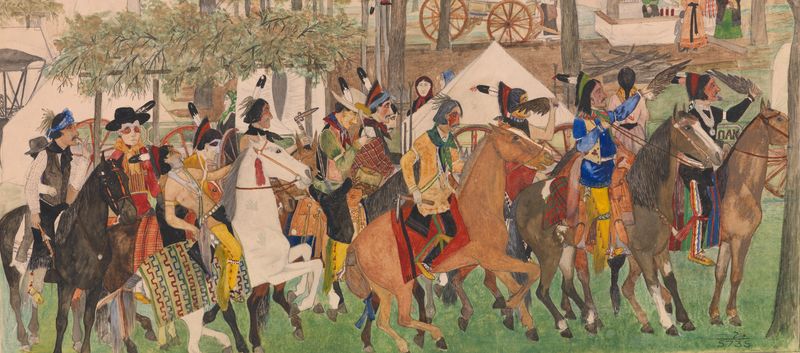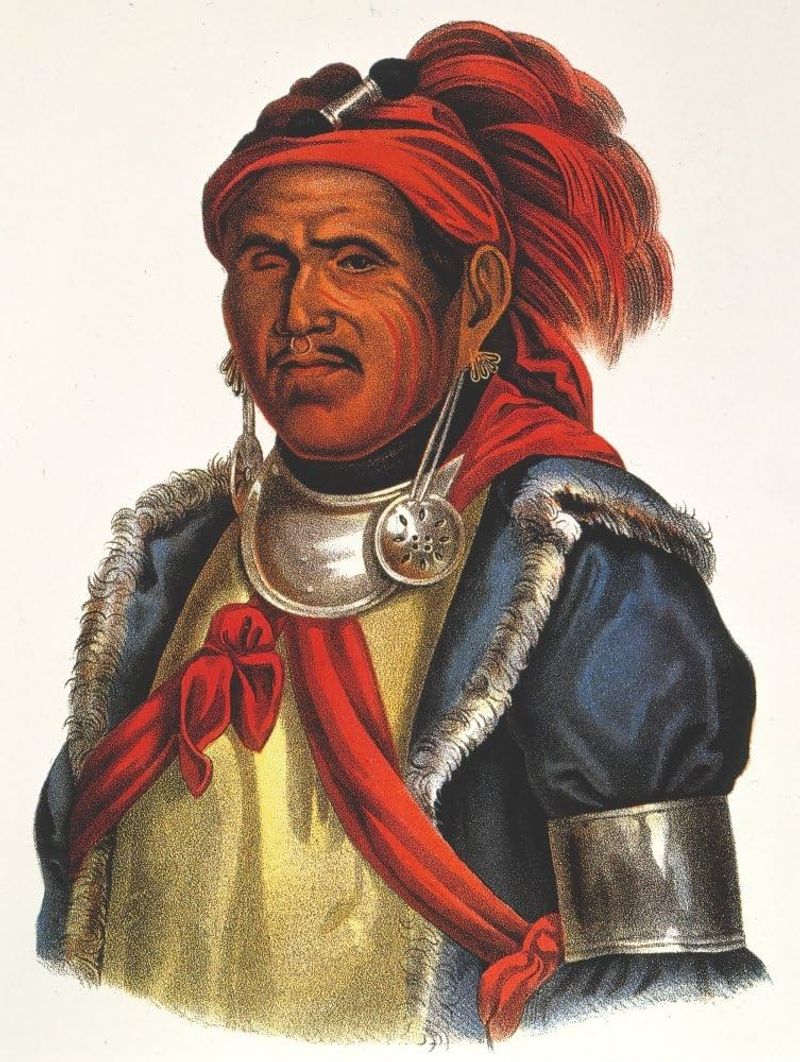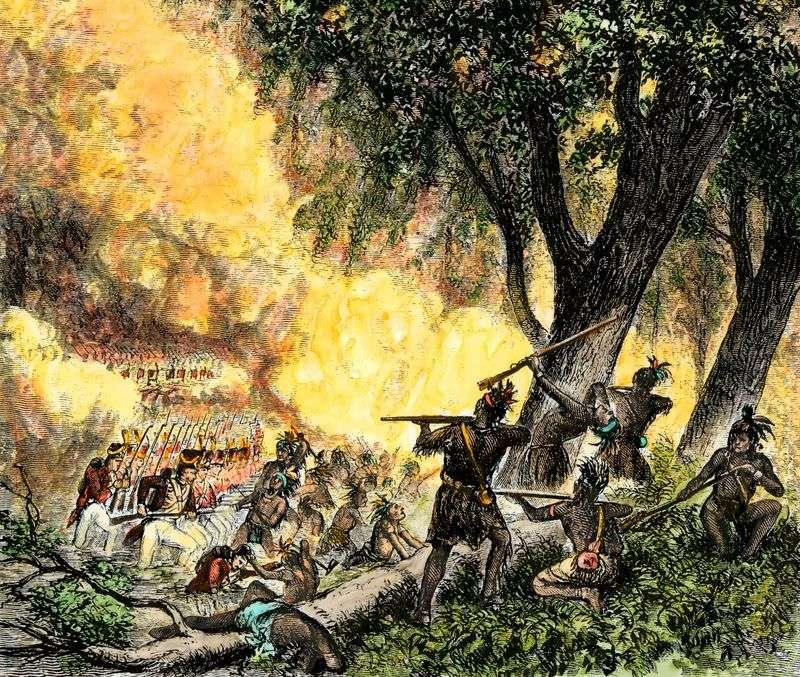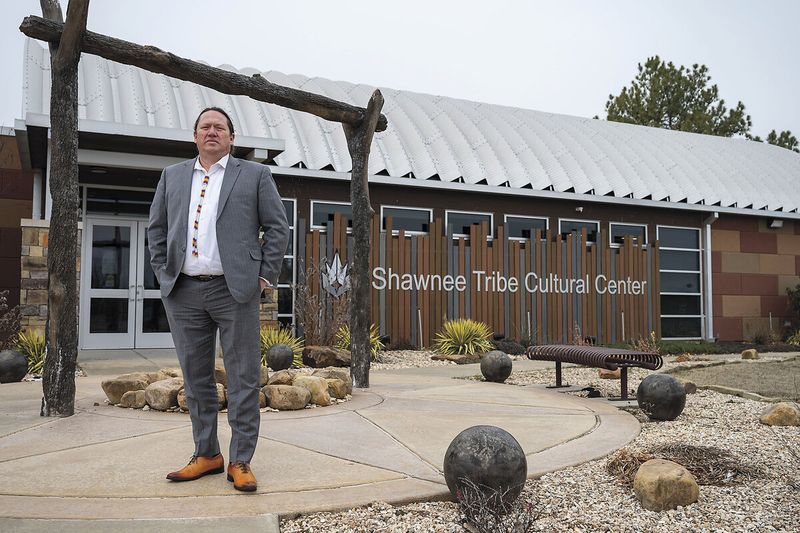The Shawnee, known for their rich history and cultural significance, played a crucial role in the tapestry of Native American life. Revered as the ‘southerners’ of the northeast, the Shawnee navigated a world of migration, alliances, and resistance.
Their influence stretched across language, warfare, and spirituality, leaving a lasting impact on American history. This article delves into 14 captivating facts about the Shawnee, unraveling the mysteries and strengths of these northeastern forest warriors.
1. They Believed in a Great Spirit and Sacred Balance
At the heart of Shawnee spirituality was the belief in a Great Spirit and the sacred balance of nature. This worldview emphasized that all things possess spirit and purpose, fostering a culture of respect.
Rituals and ceremonies were integral to maintaining this balance, often held in beautiful natural settings. These spiritual practices connected the Shawnee to the earth and each other.
Such beliefs guided their daily lives, influencing decisions and actions, and embedding a deep sense of harmony and interconnectedness with all living things.
2. Tecumseh Was a Shawnee—and a Legend
Tecumseh, a name etched in history, was a Shawnee and a visionary leader. His charismatic leadership brought together various tribes in resistance against U.S. expansion in the early 1800s.
Tecumseh’s dream was a united Native American front, and his efforts in diplomacy and warfare left a legacy that transcends generations. Known for his eloquence and strategic acumen, he stands as a symbol of resistance and unity.
His vision and courage made him an iconic figure, not just among the Shawnee, but across all indigenous tribes battling for their lands and rights.
3. They Spoke a Language That’s Almost Lost
The Shawnee language, a melodic expression of culture, belongs to the Algonquian family. Today, it teeters on the brink of extinction, with only a handful of fluent speakers remaining.
Efforts to revitalize the language are ongoing, aiming to preserve this vital cultural heritage. The language’s nuances and expressions tell stories of the Shawnee’s past, their beliefs, and their worldviews.
As modern Shawnee strive to keep their language alive, it represents both an ancestral connection and a crucial element of cultural identity that binds the community together.
4. They Were Known as the “Southerners” of the Northeast
The Shawnee, intriguingly, were dubbed the “southerners” of the northeast. This paradoxical title springs from a history of migration and complex tribal alliances. In their journey across the woodlands, they carried with them stories and traditions that resonated with southern Native American tribes.
Navigating through dense forests and river valleys, their travels enriched their culture. The name ‘Shawnee’ itself is derived from a word meaning ‘southerner,’ reflecting both their geographic movements and cultural connections with tribes further south.
Despite their northerly homes, their identity and heritage are intertwined with southern influences.
5. Their Villages Were Built for War and Peace
Strategically built, Shawnee villages were masterpieces of adaptability. Temporary by design, these villages were often nestled along rivers, enabling swift movement when hunting or evading threats.
The village setup reflected a dual purpose: peaceful living and readiness for conflict. Structures were practical, allowing families to pack up and travel when necessary, leaving no trace behind.
This flexibility ensured survival amid shifting geopolitical landscapes, with the Shawnee adeptly balancing the needs of daily life and the demands of warfare.
6. They Were Masters of the Forest
Living in harmony with their environment, the Shawnee were true masters of the northeastern forests. They skillfully utilized every part of the forest for sustenance, healing, and tools.
Their deep knowledge of flora and fauna enabled them to thrive, treating the forest as both a home and a provider. Medicines were crafted from native plants, while animals provided food and materials for clothing and shelter.
This symbiotic relationship with nature was key to their survival, fostering a culture of respect and balance with the natural world.
7. They Were Relentlessly Pushed Westward
The tale of the Shawnee is one of relentless displacement, driven by European and American expansion. Originally from the Ohio Valley, they were pushed westward, uprooted from their ancestral lands.
Each forced migration was a struggle for survival, leading to new settlements and alliances. Despite these hardships, the Shawnee maintained their cultural identity and resilience.
Their story is a poignant reminder of the broader narrative of Native American displacement, marked by courage and endurance in the face of adversity.
8. Five Major Divisions Made Up Their Nation
The Shawnee nation was uniquely structured into five major divisions, each with distinct roles. These divisions were responsible for leadership, peacekeeping, and warfare, ensuring a balanced society.
This organizational structure promoted unity and efficiency, with each division contributing to the nation’s overall well-being. Leadership roles were often hereditary, passed down through generations.
Such a system allowed the Shawnee to navigate complex social and political landscapes, maintaining order and cohesiveness within their communities.
9. They Played a Key Role in the French and Indian War
During the French and Indian War, Shawnee warriors were pivotal allies to the French. Their strategic prowess and intimate knowledge of the land were invaluable in defending their homelands.
The Shawnee’s fierce resistance against British and colonial forces showcased their bravery and tactical skills. Their role in the war highlighted their importance in the broader geopolitical struggles of the time.
This alliance not only influenced the war’s dynamics but also underscored the Shawnee’s determination to protect their land and way of life.
10. The U.S. Government Split the Shawnee into Multiple Tribes
Following forced relocations, the Shawnee were divided by the U.S. government into different groups like the “Absentee,” “Eastern,” and “Loyal” Shawnee.
This fragmentation was a strategy to weaken their unity and disrupt their traditional societal structures. Each group faced different challenges and adapted in diverse ways.
Despite these divisions, the Shawnee continued to preserve their culture and identity, striving for autonomy and recognition even in fragmented forms.
11. They Used Signal Fires and Drum Messages
Communication among the Shawnee was a blend of creativity and tradition, utilizing signal fires and drum messages to relay information over distances.
These methods allowed for swift communication in times of war and peace, transmitting complex messages interpreted by allies across the region. This system was not only efficient but also culturally significant.
The use of such signals underscored the Shawnee’s ingenuity and adaptability, contributing to their strategic advantage in both diplomacy and conflict.
12. They Had One of the Earliest Recorded Prophets
Tenskwatawa, known as the “Shawnee Prophet,” was an influential spiritual leader among his people. As Tecumseh’s brother, his visions and prophecies inspired a pan-tribal revival.
His teachings emphasized returning to traditional ways and resisting foreign influence, fostering a sense of unity and cultural pride. Tenskwatawa’s role was crucial in the spiritual and political life of the Shawnee.
His influence extended beyond his own people, impacting other tribes and shaping the course of Native American resistance during a tumultuous period.
13. They Influenced American Frontier Tactics
The guerrilla-style combat tactics of the Shawnee were innovative and effective, influencing American frontier strategies. Their mastery of surprise attacks and intimate knowledge of the terrain gave them a strategic edge.
These tactics were later adopted by American militias and rangers, showcasing the Shawnee’s profound impact on military practices. Their approach was not just about warfare but also about survival and adaptation.
This influence underscores the Shawnee’s legacy in shaping the tactical mindsets of future generations, blending traditional knowledge with strategic innovation.
14. Modern Shawnee Still Fight for Recognition
Today, the fight for recognition continues among the Shawnee, with some tribes federally recognized while others strive for acknowledgment. This ongoing struggle is emblematic of their resilience and determination.
Cultural preservation remains a key focus, with efforts to revitalize language, traditions, and community structures. These initiatives symbolize a commitment to heritage and identity.
The modern Shawnee continue to embody the spirit of their ancestors, advocating for rights and recognition in a rapidly changing world, while maintaining a proud and enduring cultural legacy.
